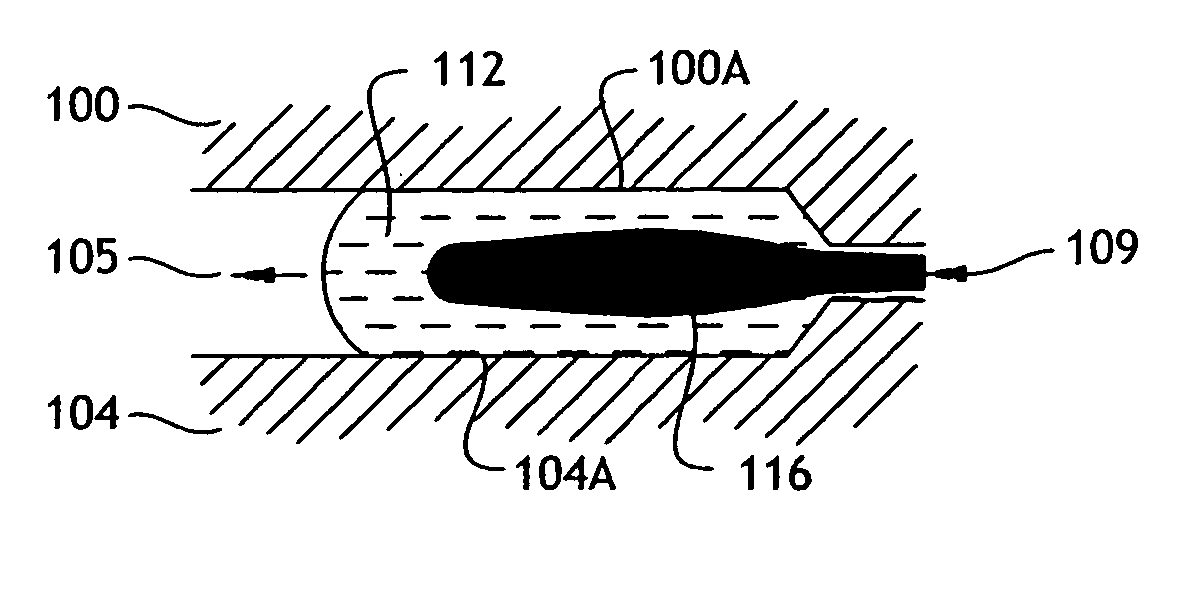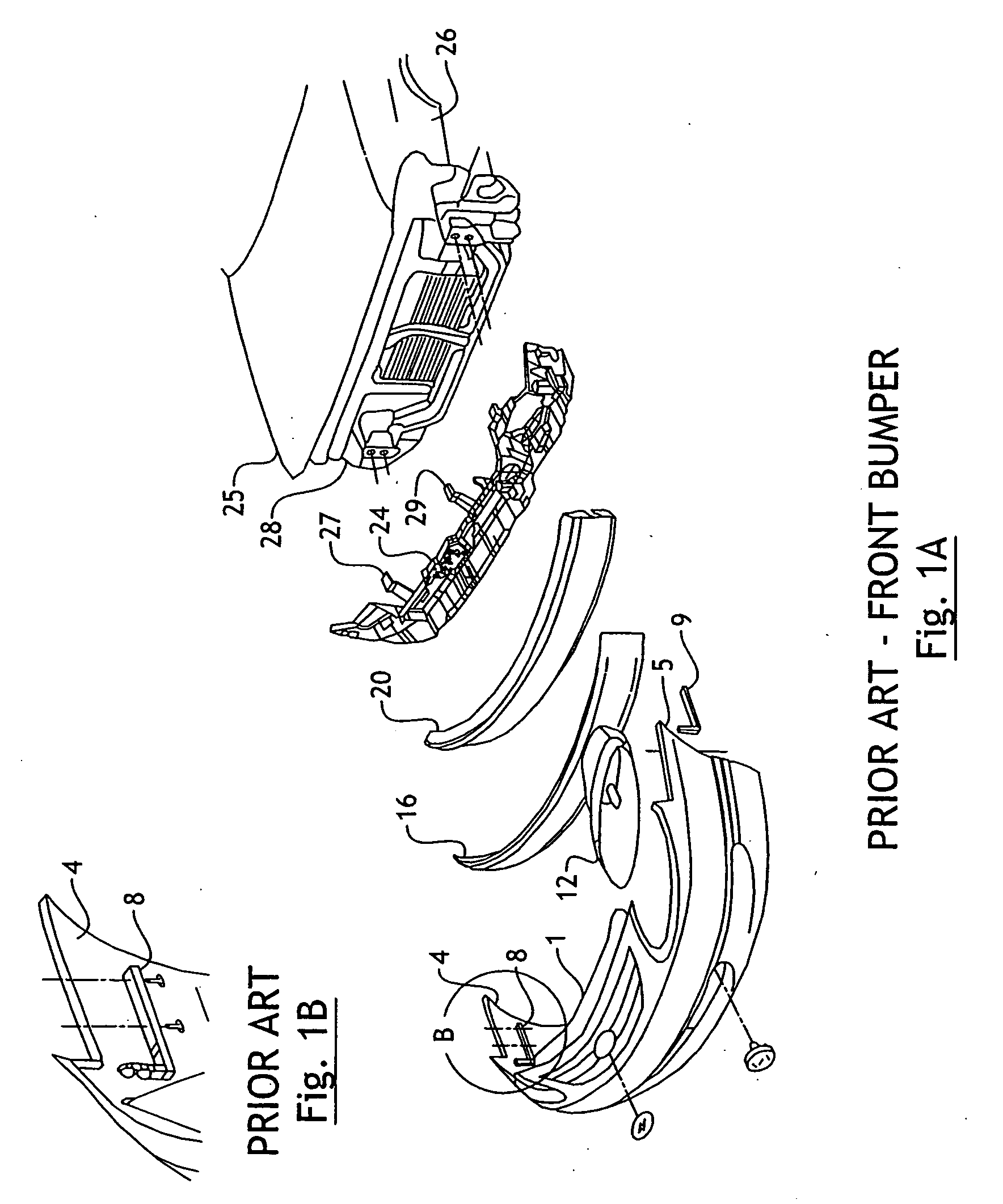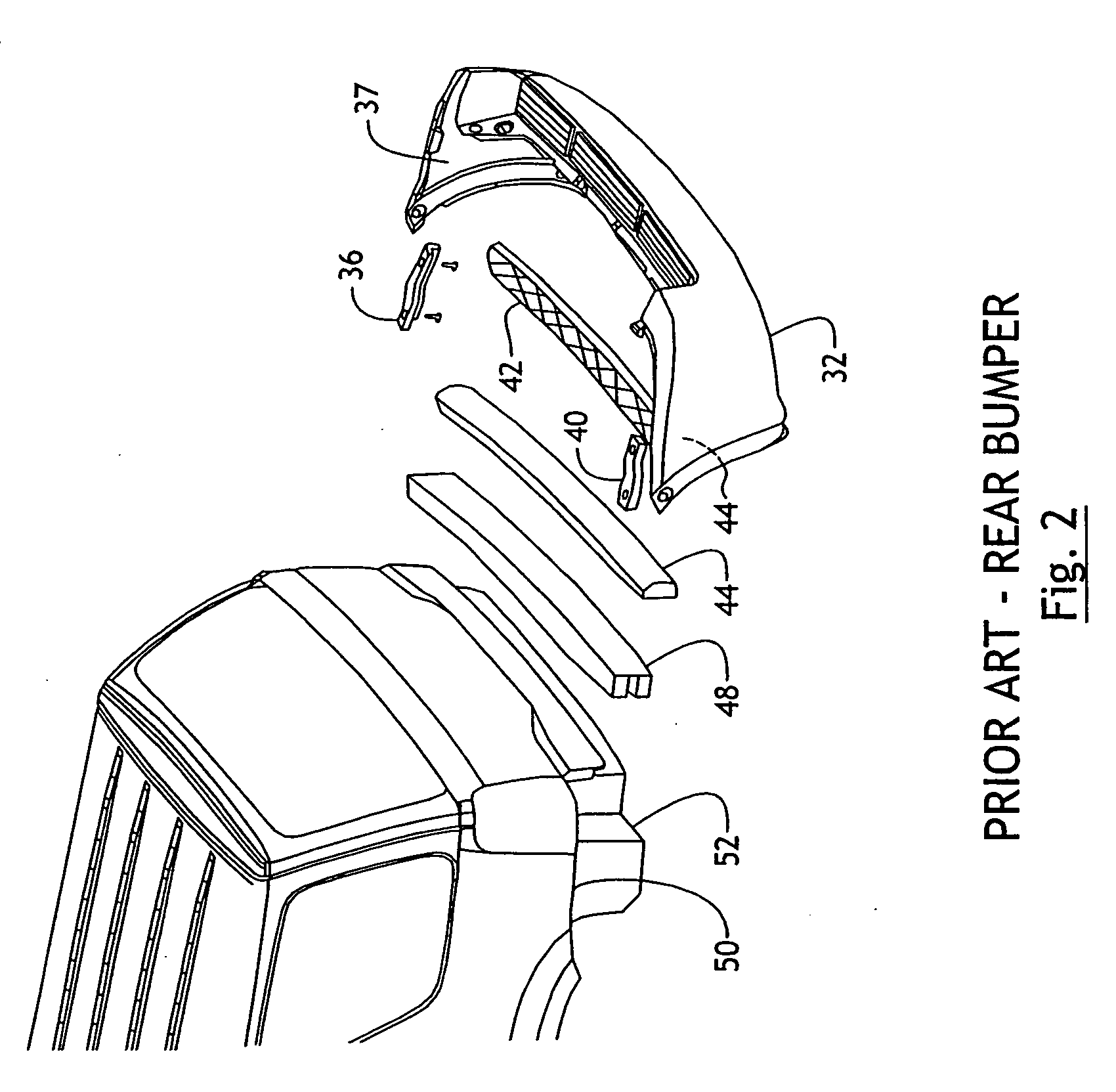Integrated co-injection molded vehicle components and methods of making the same
a co-injection molding and vehicle technology, applied in the field of vehicle components, can solve the problems of considerable effort and cost, known bumpers and methods for manufacturing them are characterized by relatively high production costs, and achieve the effects of reducing the density of the core, reducing the weight of the component, and reducing the cos
- Summary
- Abstract
- Description
- Claims
- Application Information
AI Technical Summary
Benefits of technology
Problems solved by technology
Method used
Image
Examples
Embodiment Construction
[0047]FIG. 1A depicts an exploded view of a prior art front vehicle bumper. The bumper has flexible components and rigid components. The flexible components include the fascia 1 which covers the other components in an aesthetically pleasing manner. The rigid components include the radiator opening support 24, which attaches to the primary body structure 28, fender attachment brackets 8 and 9, which attach the fascia 1 to the radiator opening support 24 and head lamp housing 12. An energy absorption structure is formed by a rigid bumper beam 20 and foam cap 16 which are disposed between the fascia 1 and the primary body structure 28.
[0048] During assembly, the radiator opening support 24 is attached to the primary body structure 28. The bumper beam 20 is attached to body structure 28, foam cap covering 16 is attached to bumper beam 20, and the headlight lamp holder 12 is then attached to the radiator opening support 24. Finally, the flexible fascia 1 is attached to the radiator open...
PUM
| Property | Measurement | Unit |
|---|---|---|
| flexible | aaaaa | aaaaa |
| shape | aaaaa | aaaaa |
| Density | aaaaa | aaaaa |
Abstract
Description
Claims
Application Information
 Login to View More
Login to View More - R&D
- Intellectual Property
- Life Sciences
- Materials
- Tech Scout
- Unparalleled Data Quality
- Higher Quality Content
- 60% Fewer Hallucinations
Browse by: Latest US Patents, China's latest patents, Technical Efficacy Thesaurus, Application Domain, Technology Topic, Popular Technical Reports.
© 2025 PatSnap. All rights reserved.Legal|Privacy policy|Modern Slavery Act Transparency Statement|Sitemap|About US| Contact US: help@patsnap.com



